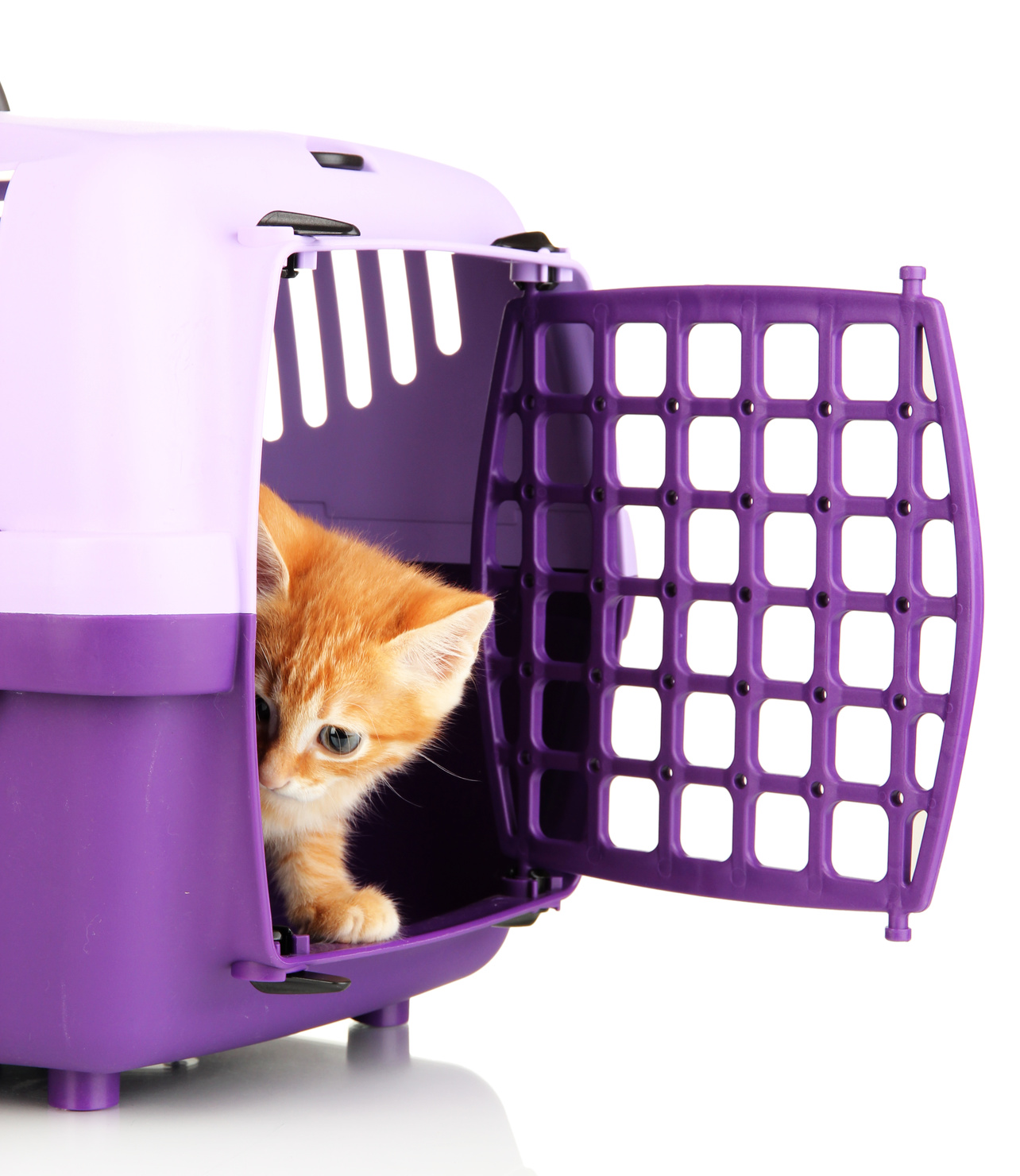Introducing a kitten to an older cat can be a milestone filled with delight in a pet lover's journey. Welcoming a new, vibrant bundle of fluff into your home, complete with playful antics and boundless energy, certainly uplifts the spirit. However, it's essential to approach this transition with thoughtful planning, particularly when your home is already under the reign of a resident cat.
While the joy of adding a kitten to your family is immeasurable, the process must be handled with consideration for all parties involved. Cats, as solitary hunters, are fiercely territorial and averse to changes in their environment. Introducing a new member to their realm requires thoughtfulness and patience to ensure a peaceful integration.
Just like introducing any two cats, introducing a kitten to an adult cat is more than simply placing two felines in the same room.
The good news? It's introducing a kitten, and a cat is actually easier than introducing two adult cats!
Before you venture out to bring home a kitten, pause and ponder: How would your existing cat feel about sharing their space with a new, potentially energetic little feline? What can you do to make the transition smoother and less stressful for both of them?
This guide answers these questions, providing you with comprehensive insights to help you make the best decision for your family.
Should you bring home a kitten?
There are many possible reasons for adopting a new cat—young or old. A kitten often finds its way into your home and heart to become part of the family.
These spontaneous adoptions happen all the time, and that’s ok.
Other times, adopting a new cat is an entirely planned event. You may feel like you have the space, time, and budget to care for an additional feline in your life.
Giving a home to a kitten in need and benefiting from another wonderful relationship with a feline friend is usually a good idea.
With the key word being: usually.
If you already have one or more cats, bringing in a new feline can be more complicated than that. You have to take the resident cat’s opinion into consideration too.

Some cats are naturally friendly and enjoy having feline friends around them. They will benefit from having company while their humans are away.
That’s not always the case, though. Many cats prefer to have your entire home as their own domain.
Even if you choose the right friend for a “loner,” they may never fully adjust to the new presence. When that’s the case, avoiding adding a new cat to your family may be the wiser choice.
If you decide to adopt a new cat anyway—adjust your expectations. The original cat may never get used to the newcomer's presence.
The two felines may not become friends, despite your efforts. A peaceful, or at least not very violent co-existence is the best you can hope for.
How to choose the right kitten that will best suit your older cat
So, do you think your resident cat will benefit from having a feline friend? How to choose the right one?
Choosing a kitten—rather than an adult cat—is usually a good starting point. Here's why:
For your resident cat, any new feline that you bring home could initially be viewed as a threat. The smaller that new cat, the less threatening he or she will be perceived as.
Having said that, don’t be surprised if the initial response of your older cat will still be fear. That’s perfectly natural.
The kitten may appear small, but scent-wise, this is still a “strange cat” and an intruder.
As a rule of thumb, the younger the new kitten, the better. If you found an orphaned newborn kitten, your older cat may not feel threatened at all.
Newborns are blind, deaf, and—most importantly—nearly immobile. That’s as unthreatening as a cat can be.

As we'll soon discuss, you should keep a newborn apart from the resident cat for a while for health reasons.
Once Kitty understands there's a tiny baby cat in your home, she's likely to feel less threatened (compared to having a strange adult cat there).
Of course, adopting a newborn isn’t an easy solution.
Newborns are high-maintenance and fragile creatures. If you have no experience with raising newborns, you’ll soon find you have your job cut out for you.
Check this article to read about how to take care of a newborn orphaned kitten.
And remember, never deliberately separate a newborn from the mother cat. You’ll be putting the kitten’s very life in danger.
If you’re adopting from a litter raised by the mother cat make sure the kitten is at least 14-16 weeks old before leaving the mother.
SIGN UP FOR THECATSITE'S EMAIL UPDATES >
The Introduction
The introduction process will depend on the age of your kitten. We’ll address four age groups in this context:
- Newborns to four weeks old
- Four weeks old to two months old
- Two months to four months old
- Four months old to a year
Any older than that and your kitten should be treated as an adult to make the introductions.
Keep in mind that this division by age group is at least somewhat artificial.
As we’ll address the characteristics of each group, you’ll be able to assess which stage is really most appropriate for describing your kitten—regardless of her biological age.
1. Newborns to four weeks old
During the first weeks of their lives, kittens are passive and delicate things. Newborns are blind, deaf, and have very limited mobility.
If you rescued a newborn kitten, keep her separate from older cats for the first three to four weeks of her life. The newborn’s immune system is immature, and she is at risk of becoming sick.
Your older cat may be carrying bacteria or viruses that her fully-developed immune system keeps in check.
Exposing the small kitten to these microbes could make her sick, even if the adult cat is healthy. Remember to thoroughly wash your hands before touching the kitten so that you don’t end up transferring these germs even though the cats are separated.
The exact age at which you’ll make the introductions may vary but it’s best to wait for your veterinarian to give you the all-clear.
A healthy and vivacious kitten may be ready for the introduction at the age of 3-4 weeks old. With a weaker kitten, you may want to wait until the kitten is a little bit older.
2. Four to eight weeks old
At this age, a healthy kitten should be becoming gradually more independent. Your kitten can now see and hear the world around her and as the weeks go by, she’s becoming more agile and active.
This could be a good age for making introductions, but you’ll have to supervise them carefully. If the older cat is showing signs of aggression, you may need to slow down the introduction process, simply to keep the kitten safe.
Many cat owners get away with simply placing the new kitten in the older cat’s territory. In many cases, you won’t see signs of aggression.
Fear and hesitation would be natural reactions on the part of the adult cat but with such a small kitten, the older cat is far less likely to go into full attack mode.
Supervise those first meetings but make sure you don’t add to the stress yourself. Use a very calm and soothing tone of voice if you speak at all.
Avoid shouting or reprimanding her even if your cat shows signs of fear or aggression. Doing so will only make her associate the kitten with negative and scary sensations.
With any luck, your older cat will soon get used to the newcomer. Some older cats—male and female alike—may display parental behaviors. They may soon take to grooming a kitten and looking after the little one.
Other cats remain distant and elusive. They take longer to get used to the kitten, or they may always remain suspicious. As long as they don’t attack the kitten, you’re doing well.
3. Two to four months old
At this age, the kitten could be fairly large but usually smaller than an adult cat. Expect the resident older cat to be more fearful.
As an added challenge, kittens of this age group are usually extremely active. These little balls of energy may be small in size, but they can deter an adult cat by their sheer enthusiasm and level of activity.
If you try to introduce the two felines simply by placing them together, you’ll probably see signs of mutual fear.
By now, the kitten is probably aware of the risk of meeting another cat, especially one larger than herself.
That’s why it’s best—and safest—to make the introductions gradually in this case. The larger the kitten, the longer and more gradual the process.
Start by keeping the newcomer in her own safe room for a few days. Give her time to adjust to her new surroundings before she needs to deal with meeting the resident cat.
Follow the gradual introduction process, as it’s described in this article.
Go slowly but know that, on average, the process should take less time than it would when both cats are full-grown. The younger the kitten, the shorter the process.
4. Four months old to a year
The kitten is physically larger at this point and could seem as threatening to the resident cat as an adult cat would.
You should start with having the two cats separated and then follow the protocol detailed here. Go slow and don’t rush things.
When talking about kittens this old, the only difference between a kitten and an adult is the level of energy.
Rather than helping you with the introduction process, this trait could actually get in the way. The older cat is likely to be deterred by the rambunctious younger cat. So take your time and go slow.
Dealing With Potential Problems
Planning ahead can help you prevent potential problems before they even begin, so pay attention to this section.
Keep health issues in mind
We’ve already mentioned how newborn kittens should essentially be quarantined because of their fragile immune system. There are other health issues associated with introducing a kitten into your household.
If you adopted a kitten rescued off the streets or from a shelter, the kitten could be carrying some kind of disease or parasites. This time, it’s your older cat who’s at risk.
It’s always wise to make sure your resident cat is up on her shots before introducing another cat into your home.
It’s also good practice to have the kitten seen by your veterinarian before making the introductions. The kitten needs to be checked for infections, dewormed, and possibly de-flea.
Don’t rush into making the introductions until the kitten gets a clean bill of health.
Senior cats and overactive kittens don't mix well
Older cats, especially seniors aged seven and above, are more likely to be sedentary.
In their teens, especially late teens, senior cats may also suffer from a variety of degenerative health problems, including loss of sight, loss of hearing, arthritis, and dementia.
These older cats may become very stressed by the presence of an active kitten. In fact, the kitten’s running around, and constant attempts at play could stress a senior cat to the point of causing additional illness.
Think long and hard before introducing a kitten into a home with a senior cat. It may just not be worth it.
If you must do so, make sure the older cat has places where she can hide away from the kitten. When the kitten is young, this could be a place that’s higher up—too high up for the kitten to climb. Later on, it could just be a selection of places where the older cat can find peace and quiet.
Provide the kitten with other outlets for all that energy. Get plenty of toys and dedicate time every day for interactive playtime with the kitten. It’s your job to tire out the kitten, not the older cats.
What to do if your older cat is attacking the kitten
Have you noticed the older cat trying to bite or otherwise attack the kitten? The cats may be playing with one another, with the older one displaying dominance.
Cats have their pecking order; to some extent, you should allow them to establish a hierarchy. If the kitten isn’t too young, she can probably take care of herself. However, if you suspect the kitten is in danger, you should step in and remove her from the scene— and then get back to gradually introducing the two felines.
Not sure if the cats are playing or fighting? Try to record the interaction on video and share it in our cat behavior forums. More experienced members will be able to help you determine the type of behavior you’re seeing.
The most important thing to remember is to remain calm.
Even if you’re sure you have an actual catfight on your hands, do not shout or punish either one of the cats. Doing so will only agitate them further and make them more likely to attack each other in the future.
Read more on How To Safely Break Up A Cat Fight.
If you notice a change in the older cat's behavior
The introduction of a new feline into your home can change the behavior of the resident cat. The older cat may be showing the effect of the added stress, possibly to the extent of developing health issues.
If you suspect this may be the case, call your veterinarian and see if they think Kitty needs to be brought in.
Other times, the older cat may just be reacting to the additional stimulus. In fact, some owners report that the cats are taking to one another to the extent that they require less attention from the humans.
If you're used to your older cat being clingy, this may come as a surprise. It's not a bad thing, of course. It just means your cats have become good friends.
If you're still unsure about changes in behavior, check out this article:
Cat Acting Strangely? Here's What It Could Mean
Set Your Expectations
As with any introduction of one cat to another—set your expectations ahead of time. The two cats may or may never become good friends.
And that’s ok. All you can do is provide them with the best surroundings for getting close to each other and ensure no one gets hurt.
SIGN UP FOR THECATSITE'S EMAIL UPDATES >
Suggested reading:
- How To Successfully Introduce Cats: The Ultimate Guide
- Your Second Cat: How To Choose The Best Friend For Kitty
- Kitten Development Stages - Illustrated Guide
- A Kitten Or An Older Cat - Which Should You Adopt?
- Articles on multi-cat-household
Note: We may get commissions for purchases made through links on this page.




4 comments on “How To Introduce A Kitten To An Older Cat [A Guide]”